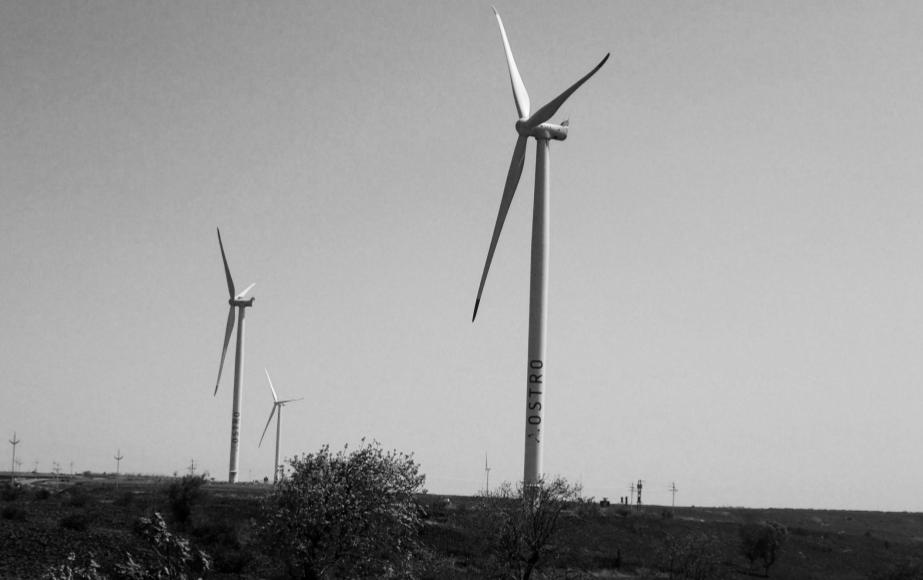Are Windmills Driving The Rainfall Away?
ASTHA SHARMA
When most of the states in India are suffering the havoc of monsoon, few districts in Western Madhya Pradesh are experiencing drought like conditions. Situation is so bad that now people of Shajapur district of Madhya Pradesh have started blaming the windmills that are setup in the region recently for driving away the monsoon rains.
What they are thinking is not new. Similar rage was expressed in 2004 when Satara district of Maharashtra was hit by drought. Local residents, reeling under drought like conditions from three years then argued that windmills drive the clouds away and even threatened to forcibly close the wind farms. Later the matter was solved after intervention of people from Indian Meteorological Department (IMD).
But the point is, Is this true? Do windmills actually drive away monsoon clouds?
A lot of reports have been published till now arguing that wind mills cause climatic change. There are two major ways of estimating the climatic brunt of wind turbines. One is to compare the real climate of a region before and after wind farms are installed there. Another approach is to stimulate the Earth’s climate with computer models. A lot of studies have been conducted to study this effect.
Most of the arguments supporting the fact that wind farms disturb climate quote a 2012 study that observed 1.3 0F in warming over a course of a decade in Western Texas and endorsed it to the construction of wind farms in that region. A study published in journal Nature communications studied the effect of wind mills on climate on a broader region and concluded that these wind mills would vary the temperature but not more than .54 0F (.3 0C)- resolutely within the range of natural year-to-year inconsistency. This study also explained how windmills cause an increase in night temperature, a positive impact for farming as it avoids frost on crops.
Rotating blades of windmills causes mixing of air. When the winds pass through the blades, they get a small whirl and loose some kinetic energy resulting in torque on the blades and power extraction. For example a rotor of 40 m diameter on a 50 m high pole would shed a low velocity envelope of about 45 m diameter at a distance of 200 meters. As the air leaves the rotor plane, it starts mixing with the flow in the main stream and reaches nearly the original energy levels in a distance of about 10 times the rotor diameter. This is purely a local effect and much like the wake of a boat in still water. Even the temperature variation occurs in local region in the immediate vicinity of the wind mills only.
Considering the argument of wind turbines driving away monsoon clouds and are the cause of drought in districts (specifically Shajapur) of Madhya Pradesh, it is important to understand few concepts. According to an analysis done by Maharashtra Energy Development Agency (MEDA), during monsoon most of the time low level base height of monsoon clouds is more than 1500m above sea level. Altitude of Shajapur is 443m, even on adding the height of wind mills which is around 100-150 m, clouds are much above the windmills.
There are occasions when these clouds have been observed at 900-1000 m height above sea level, but still they are at a considerable distance from wind mills and it is very unlikely that rotating blades of wind turbine will have any impact on them. Moreover monsoon flow extends 5-6 kms vertically, the effect of these windmills is however limited to 100 m vertically and 200 m horizontally. Even though these farms are spread in a considerable area, they do not act as solid obstruction. They do not stimulate enough vertical velocities to result in any significant alteration in precipitation. To support this thought we had a look at the average rainfall statistics (data is available on IMD website) of some districts having wind farms located in different states in India.
Rainfall in these districts clearly followed the pattern of monsoon in that respective year and average rainfall in that district. There was no visible effect of wind farms on rainfall in these districts, further supporting the fact that windmills do not affect the rainfall or particularly monsoon rains.
The observed decrease in rainfall in Western Madhya Pradesh and Shajapur is a part of large scale natural variability. This disturbance in monsoon pattern is more due to effects like global warming, resulting in drought and floods in different regions. Moreover excessive cuttings of trees, mining, industrialization adds to this effect. Talking about the effect of windmills on environment they do affect the environment. Use of wind farms to produce electricity will cut our dependence on fossil fuels, which are the main cause of carbon emission and global warming. ‘Wind energy is likely to be a part of the solution of the global warming problem.’





